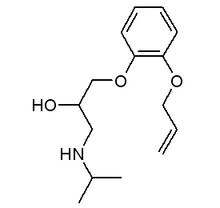STIMULANTS
Include various drugs that act on the brain, reducing tiredness and increasing alertness, competitiveness and aggression. They can also produce harmful side-effects: a rise in blood pressure and body temperature; increased and irregular heart beat; aggressiveness and anxiety; loss of appetite, and addiction. Competitors have died through misusing stimulants. If the body overheats and is unable to cool down, it dehydrates and blood circulation decreases. The heart and other organs will stop working normally. This can be fatal. Examples of stimulant substances include amphetamines, ephedrines, caffeine, phentermine, and cocaine. These substances may be found in low doses in cough and cold medications.
NARCOTIC ANALGESICS
Otherwise known as painkillers. They act on the brain to reduce the amount of pain felt from injury or illness and in medicine they have an important use. But narcotic analgesics are banned because they are extremely addictive and make the original injury much worse. Can also cause breathing problems, nausea and vomiting, loss of concentration, balance and co-ordination, addiction. Examples include codeine, methadone, dextropropoxyphene, morphine, dihydrocodein, pethidine. A mild analgesic is available in cold and analgesic treatments without prescription, usually in combination with aspirin (allowable) or caffeine (banned).
In small doses, as prescribed by a doctor, these
substances are not harmful. But if a competitor is
found to have misused narcotic analgesics, it may be regarded as a doping offence.
ANDROGENIC ANABOLIC STEROIDS
These are a type of hormone known as testosterone. Whilst there are a small number of medical conditions that could be treated with low doses of androgenic anabolic steroids, in sport they are misused to try to make a competitor larger and stronger. For scientific reasons, bigger muscles do not necessarily mean extra strength. Androgen anabolic steroids may increase aggression, which may help people train harder. Competitors misuse them in an attempt to increase strength, power and endurance, to build up muscles and to be competitive. As hormone substances, steroids could interfere with the normal hormone balance of the body and increase the risk of liver disease and premature heart disease. In men they can also cause acne, increased aggression - sometimes resulting in violent and unacceptable sexual behaviour which, in the long term, can lead to impotence - kidney damage, development of breasts and premature baldness.
BETA-BLOCKERS
Drugs used to treat heart disease and to lower blood pressure and heart rate. Used to steady nerves. Competitors without a heart problem who misuse beta-blockers may suffer low blood pressure, slow heart rate, and tiredness. The heart may stop because it has been slowed down too much. Examples of beta-blocking drugs atenolol, oxprenolol and propranolol.
DIURETICS
Help to remove fluids from the body. They can be used medically to treat diseases of the heart, kidney and liver, and for pre-menstrual tension. Used in sport for two main reasons: to lose weight quickly in sports which have weight categories, and to increase the rate at which competitors can pass urine, because some athletes believe that this will make it more difficult for the laboratory to detect a banned substance. Competitors who misuse diuretics could suffer from dehydration. Lack of water can lead to faintness and dizziness; muscle cramps; headaches and nausea. Losing too much water could also cause the kidneys and heart to stop working, which can be fatal. Examples of diuretic substances: bendrofluazid, triameterine, frusemide, sironolactone, hydrochlorothiazide.
PEPTIDE HORMONES AND ANALOGUES
Peptide hormones "carry messages" around the body, to increase growth, influence sexual and general behaviour and to control pain. Analogues are synthetic drugs which have similar effects to natural substances. Competitors misuse peptide hormones and analogues for various reasons: to stimulate production of naturally occurring (endogenous) steroids, to build up muscles, to mend body tissue and to improve the body's ability to carry oxygen. Because everyone has hormones in their bodies, it is difficult to say how much harm is caused by misusing them.
BLOOD DOPING
The injection of blood into your body to increase the number of blood cells. Red blood cells carry oxygen to the muscles, giving the body more energy to work. Competitors in endurance activities such as running, cycling, marathons and skiing might use blood doping to increase their energy carrying capacity. Risks involved in the transfusion of blood - particularly for those who have no medical need and who already have normal blood levels - include:
allergic reactions;
hepatitis or Aids; overload of the circulatory system;
blood clots; kidney damage.
Copyright 2000 Newspaper Publishing PLC
Provided by ProQuest Information and Learning Company. All rights Reserved.



